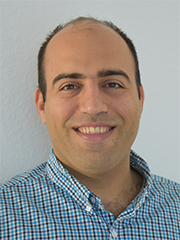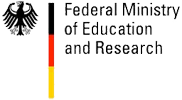| Foto | First Name | Last Name | Position |
|---|---|---|---|
 |
Mykhaylo | Andriluka | People Detection and Tracking |
 |
Roland | Angst | Vision, Geometry, and Computational Perception |
 |
Tamay | Aykut | |
 |
Vahid | Babaei | |
 |
Pierpaolo | Baccichet | Distributed Media Systems |
 |
Volker | Blanz | Learning-Based Modeling of Objects |
 |
Volker | Blanz | Learning-Based Modeling of Objects |
 |
Martin | Bokeloh | Inverse Procedural Modeling |
 |
Adrian | Butscher | Geometry Processing and Discrete Differential Geometry |
 |
Renjie | Chen | Images and Geometry |
Researcher
 |
Dr. Michael Zollhöfer |
Visual Computing, Deep Learning and Optimization
| Name of Research Group: | Visual Computing, Deep Learning and Optimization |
| Homepage Research Group: | web.stanford.edu/~zollhoef |
| Personal Homepage: | zollhoefer.com |
| Mentor Saarbrücken: | Hans-Peter Seidel |
| Mentor Stanford: | Pat Hanrahan |
| Research Mission: | The primary focus of my research is to teach computers to reconstruct and analyze our world at frame rate based on visual input. The extracted knowledge is the foundation for a broad range of applications not only in visual effects, computer animation, autonomous driving and man-machine interaction, but is also essential in other related fields such as medicine and biomechanics. Especially, with the increasing popularity of virtual, augmented and mixed reality, there comes a rising demand for real-time low latency solutions to the underlying core problems. My research tackles these challenges based on novel mathematical models and algorithms that enable computers to first reconstruct and subsequently analyze our world. The main focus is on fast and robust algorithms that approach the underlying reconstruction and machine learning problems for static as well as dynamic scenes. To this end, I develop key technology to invert the image formation models of computer graphics based on data-parallel optimization and state-of-the-art deep learning techniques. The extraction of 3D and 4D information from visual data is highly challenging and under-constraint, since image formation convolves multiple physical dimensions into flat color measurements. 3D and 4D reconstruction at real-time rates poses additional challenges, since it involves the solution of unique challenges at the intersection of multiple important research fields, namely computer graphics, computer vision, machine learning, optimization, and high-performance computing. However, a solution to these problems provides strong cues for the extraction of higher-order semantic knowledge. It is incredibly important to solve the underlying core problems, since this will have high impact in multiple important research fields and provide key technological insights that have the potential to transform the visual computing industry. In summer 2019 Michael Zollhöfer joined Facebook. |
Researcher
- Name of Researcher
- Erik Reinhard
- Homepage of Research Group
- First Name
- Erik
- Last Name
- Reinhard
- Foto

- Homepage
- www.erikreinhard.com/index.html
- Phone
- Position
- Color Image Processing
- Mentor in Saarbruecken
- Hans-Peter Seidel
- Mentor in Stanford
- Categories
- Former Groups
- Research Mission
- Most images and videos are capture, stored, manipulated and displayed with limited fidelity and accuracy. Capture devices typically produce data that is limited and quantised in time, space, gamut and dynamic range. Subsequently, nearly all processing, transmission and display is achieved with limited fidelity. As a result, effective communication by means of visual media is sub-optimal, the immersive qualities of displays can be improved, and image processing and computer vision algorithms are required to make sense of data that has already lost information that cannot be recovered. The aim of our research is to develop algorithms and techniques to remove these limitations, and to convey a sense of visual realism. We investigate color-accurate image processing, and aim to deliver techniques for the calibrated capture, transmission and display of images and video. In cases where physical accuracy is impractical or impossible, for instance in certain inverse problems, we aim to develop perceptually plausible algorithms and demonstrate their effectiveness by means of visual psychophysics. In 2013 Erik Reinhard joined Technicolor Research and Innovation in Rennes, France, as a Principal Scientist.
- mission_rtf
- Name of Research Group
- Color Image Processing
Personal Info
- Photo

- Website, Blog or Social Media Link



